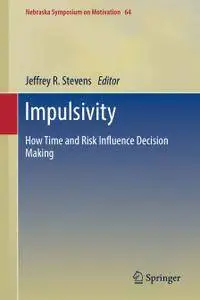Jeffrey R. Stevens, "Impulsivity: How Time and Risk Influence Decision Making"
English | EPUB | 2017 | 287 Pages | ISBN : 3319517201 | 1 MB
English | EPUB | 2017 | 287 Pages | ISBN : 3319517201 | 1 MB
As the 64th volume in the prestigious Nebraska Series on Motivation, this book focuses on impulsivity, a multi-faceted concept that encompasses such phenomena as the inability to wait, a tendency to act without forethought, insensitivity to consequences, and/or an inability to inhibit inappropriate behaviors.
Due to this multi-faceted nature, it plays a critical role in a number of key behavioral problems, including pathological gambling, overeating, addiction, adolescent risk-taking, spread of sexually transmitted diseases, criminal behavior, financial decision making, and environmental attitudes. This broad and interdisciplinary scope has historically resulted in separate subfields studying impulsivity in relative isolation from one another. Therefore, a central achievement of this volume is to convey an integrative exploration of impulsivity.
To provide a comprehensive and cohesive understanding of impulsivity, this volume brings together eminent scholars and rising researchers from different domains (developmental psychology, neuroscience, animal cognition, anthropology, addiction science), who use different techniques (behavioral assays, imaging, endocrinology, genetics). Moreover, it includes perspectives and analyses from the two primary types of impulsivity: impulsive choice (or decision making) and impulsive action (or disinhibition). The authors present expert analyses of topics such as delayed gratification, discounting models, and adaptive foraging decisions. Leveraging breadth of coverage and renowned scholarship, Impulsivity: How Time and Risk Influence Decision Making advances our understanding of this complex topic and sheds light on novel research directions and potential future collaborations.



